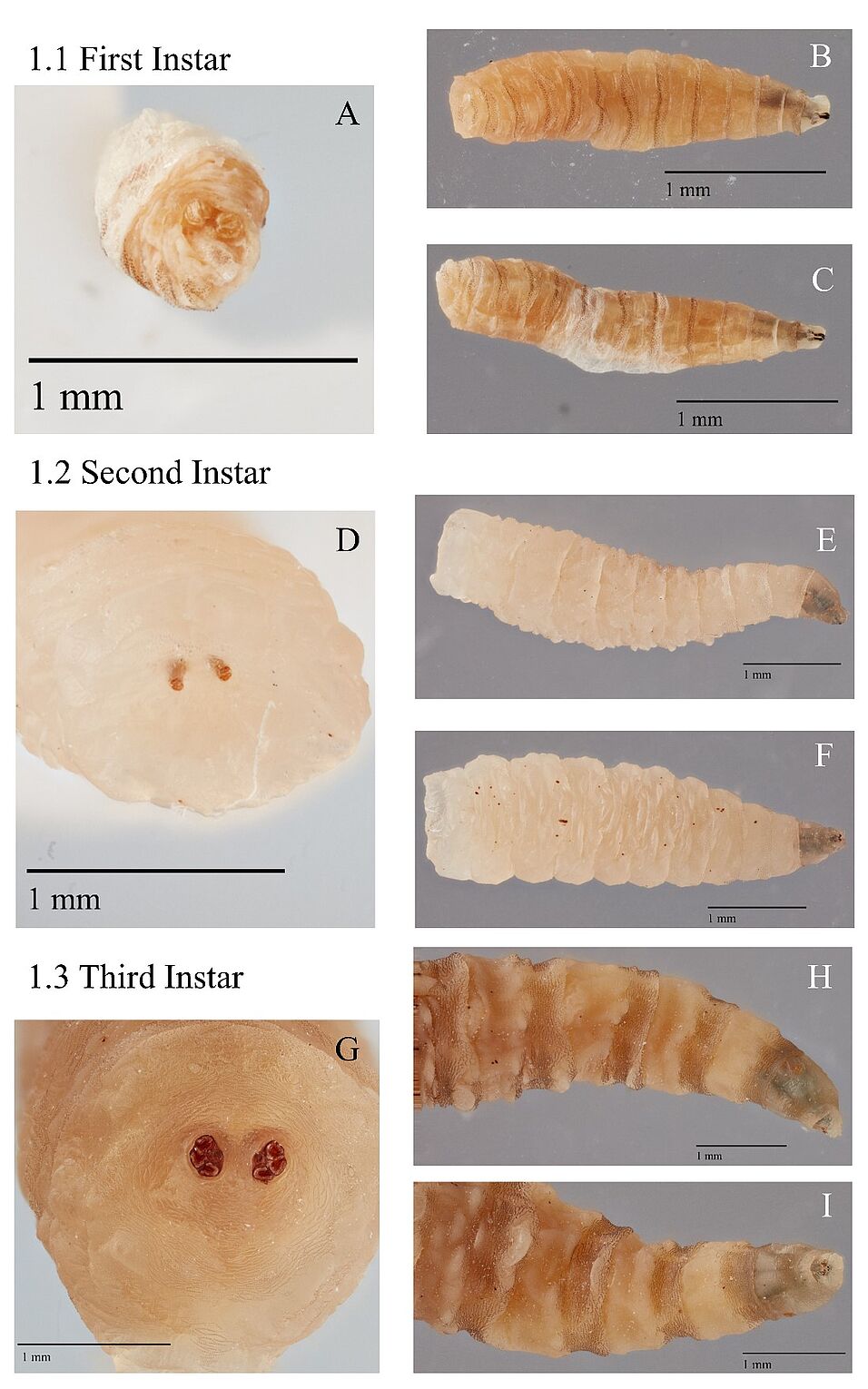Abstract
The parasitic larvae of Philornis downsi Dodge & Aitken (Diptera: Muscidae) were first discovered in Darwin’s finch nests on the Galápagos Islands in 1997. Larvae of P. downsi consume the blood and tissue of developing birds, causing high in-nest mortality in their Galápagos hosts. The fly has been spreading across the archipelago and is considered the biggest threat to the survival of Galápagos land birds. Here, we review (1) Philornis systematics and taxonomy, (2) discuss shifts in feeding habits across Philornis species comparing basal to more recently evolved groups, (3) report on differences in the ontogeny of wild and captive P. downsi larvae, (4) describe what is known about adult P. downsi behaviour, and (5) discuss changes in P. downsi behaviour since its discovery on the Galápagos Islands. From 1997 to 2010, P. downsi larvae have been rarely detected in Darwin’s finch nests with eggs. Since 2012, P. downsi larvae have regularly been found in the nests of incubating Darwin’s finches. Exploring P. downsi ontogeny and behaviour in the larger context of taxonomic relationships provides clues about the breadth of behavioural flexibility that may facilitate successful colonisation.
Common, L. K., Dudaniec, R. Y., Colombelli-Négrel, D., & Kleindorfer, S. (2019). Taxonomic Shifts in Philornis Larval Behaviour and Rapid Changes in Philornis downsi Dodge & Aitken (Diptera: Muscidae): An Invasive Avian Parasite on the Galápagos Islands. in M. Sarwar (Hrsg.), Life Cycle and Development of Diptera [Working Title] https://doi.org/10.5772/intechopen.88854

